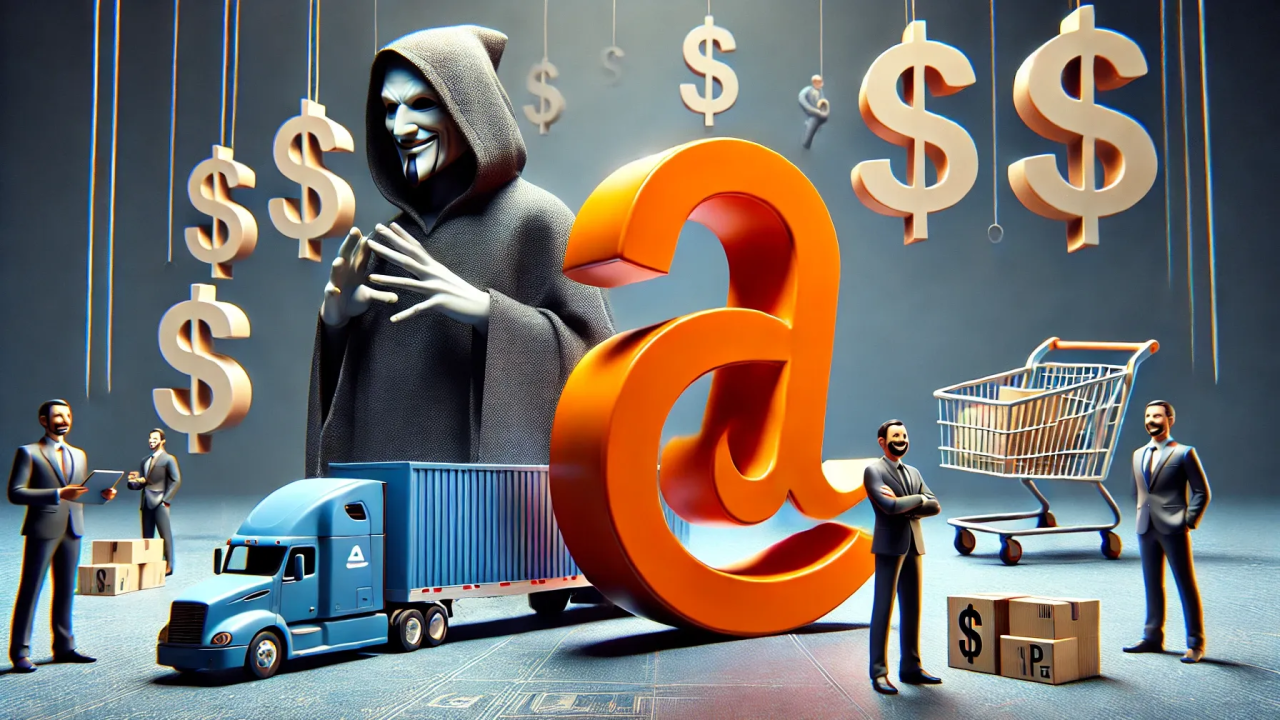Today, more than 50% of all online purchases start on Amazon. And – love it or hate it – there are multiple benefits consumers experience when purchasing through Big Brother in Seattle. For some, it’s the breadth and depth of the assortment, while others love the digital Prime perks and shipping speed. Still, others love the sheer convenience and ease of checkout.
For years, brands have viewed Amazon as both an essential sales channel and one of the biggest threats to their MAP enforcement efforts. While Amazon provides vast reach and sales potential, it also enables aggressive third-party sellers, dynamic pricing models, and unauthorized discounting – all of which can erode brand value.
But things are changing. The June 2024 ruling that classifies Amazon as a distributor, not just a marketplace, has potentially huge implications for how brands enforce MAP. Could this shift Amazon from an enforcement nightmare to an actual partner in MAP compliance? Or will Amazon continue to be a price-cutting Wild West?
This week’s edition of The Brand Data Revolution has us examining the key ways Amazon impacts MAP enforcement, what brands need to watch for, and how to navigate the complexities of selling on the platform without losing pricing control.
The 2024 Distributor Ruling: Why It Matters for MAP Compliance
Amazon’s marketplace model has traditionally allowed third-party sellers to operate with little oversight, often causing massive MAP compliance headaches. But a recent legal shift could change that.
- What Happened? In June 2024, Amazon was officially classified as a distributor, not just a marketplace. This means that, in some cases, Amazon may be held responsible for products sold on its platform, not just the sellers listing them.
- Why This Matters for MAP: If Amazon is legally seen as a distributor, it could be required to follow MAP policies more strictly – just like traditional distributors and retailers. This could encourage brands to push Amazon to take a more active role in MAP enforcement instead of simply allowing sellers to price however they want.
📌 What Brands Should Do Now: ✔️ Watch how Amazon’s internal enforcement policies evolve. ✔️ Begin testing more direct MAP enforcement strategies with Amazon. ✔️ Use this new legal standing as leverage when discussing compliance with Amazon teams.
Amazon’s AI-Powered Pricing: The MAP Killer? ¡
Amazon’s dynamic pricing (automated pricing algorithms) is one of the biggest MAP enforcement challenges brands face.
- The Problem: Amazon doesn’t just let brands and merchants set their own prices – it actively adjusts its pricing based on competitive data, demand, and sales velocity.
- The Effect: Brands often find that – even when their authorized Amazon seller follows MAP – Amazon itself auto-adjusts pricing downwardto match third-party listings or external competitors.
- The Consequence: This forces other retailers to lower their prices, triggering a domino effect of MAP violations across the market and the subsequent “race to the bottom.”
📌 What Brands Can Do: ✔️ Monitor how often Amazon is violating MAP versus independent sellers. ✔️ Work with Amazon’s Brand Registry team to explore MAP compliance options. ✔️ Consider shifting more sales to Amazon-approved resellers rather than relying on Amazon directly.
Third-Party Sellers: The Biggest MAP Threat on Amazon
- The Problem: Amazon’s low barrier to entry means that its marketplace is full of third-party resellers, many of whom intentionally undercut MAP pricing, source products through unauthorized channels, and use aggressive discounting tactics.
- The Reality: More than 60% of Amazon’s total units sold come from third-party sellers. Some of these sellers have no direct relationship with brands, sometimes making enforcement difficult.
- The Impact: When unauthorized resellers violate MAP, Amazon’s algorithm reacts – lowering its own price and triggering more violations across the industry.
📌 How to Combat Unauthorized Amazon Sellers: ✔️ Use Amazon’s Transparency Program to track authorized distribution. ✔️ Enforce stricter reseller agreements to prevent product leakage. ✔️ Work with legal teams to send cease-and-desist notices to repeat offenders.
The Case for Selling Direct: Is Amazon Actually a MAP Ally?
While Amazon has historically made MAP enforcement difficult, some brands are taking a different approach: partnering directly with Amazon to take control of pricing.
- Amazon Brand Registry & Brand Protection Tools: Brands enrolled in Amazon’s Brand Registry program gain access to more advanced MAP monitoring options and tools for removing unauthorized listings.
- Amazon’s New MAP Enforcement Pilots: Some brands have started working directly with Amazon to test MAP enforcement initiatives, particularly for brands with robust legal agreements and organizational commitments to strong MAP compliance initiatives.
📌 How to Make Amazon Work for You: ✔️ Use Amazon’s tools such as Brand Registry and “Report a Violation” to remove unauthorized sellers. ✔️ Consider exclusive partnerships with Amazon for certain products. ✔️ If you sell enough volume and can afford it, leverage Amazon’s new liability status to push for MAP compliance.
The Future of Amazon and MAP Compliance
Will Amazon finally become a reliable MAP enforcement partner? Or will it continue to prioritize low prices over brand integrity?
- The Most Likely Scenario: Amazon will continue to play both sides of the field, offering MAP-friendly tools while also using AI-driven pricing to maintain its competitiveness. It will likely continue to pay lip service to brands while washing its hands of any real accountability.
- What Brands Need to Do: Take an active role in negotiating MAP compliance with Amazonrather than waiting for changes to happen automatically.
- Biggest Opportunities: The 2024 distributor ruling could be a game-changer, but only if brands hold Amazon accountable and push for stronger enforcement tools.
📌 How Brands Should Prepare for the Future: ✔️ Start MAP enforcement conversations with Amazon now. ✔️ Invest in expanded marketplace monitoring to monitor and analyze Amazon trends. ✔️ Use Amazon’s liability shift as leverage when discussing pricing compliance.
Final Thoughts
Amazon – like nearly all massive corporations – will always look out for number one and is unlikely to become a perfect MAP enforcement partner. However, brands that take a proactive approach can gain more control than ever before. The first key to gaining control of your MAP policy on Amazon is consistency and evidence. The best MAP providers will ensure that you are armed with both visual evidence of violations and a deep history of pricing volatility. Also, by knowing your rights and staying on top of news and rulings, you will be much more equipped to fight the good fight. Brands that win on Amazon will be the ones that embrace marketplace monitoring, enforce airtight reseller agreements, and push Amazon to be more accountable.
At Pervasive Mind, we help brands leverage our proprietary AI to monitor, manage, and enforce MAP compliance across Amazon and beyond. If you’re ready to take control of your MAP strategy or just want an education about best practices and market trends, let’s start the conversation.




